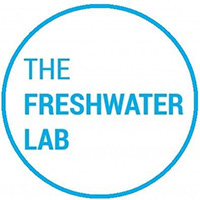The South Branch and the Sanitary and Ship Canal offer few places to access the river. It takes an adventurous spirit to move through industrial hubs, dodge semi trucks, and navigate broken glass to reach the water. The Canalport Riverwalk, a five-acre park that straddles the South Branch and the canal, is one of the few access points on Chicago’s West Side. Its existence is barely known even to longtime residents.The courageous spirits who visit contend with smells of exhaust and grinding noise from metal being shredded across the water.
The Environmental Protection Agency (EPA) classifies neighborhoods along this part of the river as environmental justice communities that face ongoing environmental and public health harms.
Here, pollution doesn’t cease but only takes new forms. For example, grassroots activism in Pilsen and Little Village shut down the last two coal power plants along the Chicago River and made plans for clean energy hubs and green industry in their place. But, behind closed doors, corporations like Amazon and HILCO launched plans for warehouses and distribution centers where power plants once stood. On Easter weekend 2020, Hilco contractors blew up the Crawford coal power plant in Little Village, blanketing the neighborhood in toxic dust during the outbreak of the COVID-19 pandemic. Hilco next built a distribution center for Target a mile away from schools and a park that increased truck traffic by 400 vehicle movements per day (a total of 700 trucks pass through the site every day).
Warehouses often receive public funding through tax abatements and other incentives under the guise of creating new jobs. However, these jobs tend to be low-wage and have hazardous work environments, and there is little guarantee that warehouse neighbors will find employment in them. Due to the high number of injuries in warehouse work, the jobs in question tend to be short-term.
Exclusion of community input characterizes development along the South Branch. The famous Damen Silos once stood on 23 acres next to Canalport Riverwalk Park. Abandoned long ago and featured in the movie Transformers: Age of Extinction, the State of Illinois looked to unload the cost of maintaining the silos by selling the property. Their sale transpired without involvement by residents or input from community leaders. Although they sit directly on the riverfront, environmentalists and river lovers had no say about the sale of the silos. Local groups and neighbors are concerned that more pollution is coming from the new owner, who is notorious for building an asphalt plant in McKinley Park in close proximity to a major park, school and homes without proper notice.
In contrast to this cycle of pollution and disenfranchisement, a just transition approach forefronts community-based economic initiatives. A Just Transition framework places people first to avoid perpetuating environmental and labor injustices. This means active engagement in shifts around production and industry from all impacted groups including employers, workers, elected officials and neighbors to ensure the creation of well-paying green jobs with health benefits that reflect the vision and skills of the community.
Toward achieving a just transition, the Pilsen-Little Village River Corridor Project developed “a master plan for a healthier, more accessible Chicago Sanitary and Ship Canal corridor from Bubbly Creek to west of Pulaski Road on Chicago’s southwest side.” Community-based redevelopment of the area seeks to provide clean and healthy jobs, economic growth and options for leisure and recreation.
The Freshwater Lab strives to contribute to a just transition by reimagining a green space in the Pilsen industrial corridor. Currently, we are collaborating on the Rio de Bienvenida/River of Welcome Project funded by the E(art)h Chicago initiative. The public art project will be situated at Canalport Riverwalk. It will be composed of laser-cut metal and mosaics facing the water with designs that symbolize the vision for cleaner air and water. Through a series of art workshops, community members engage in conversations and design discussions around how to make the park more welcoming and accessible.


